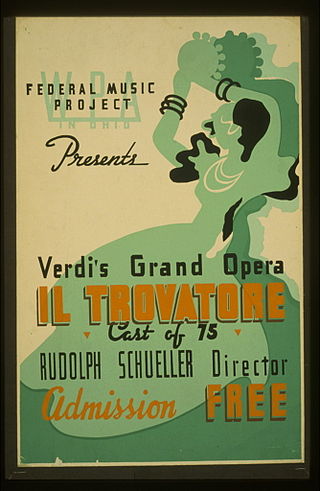
This is a list of notable events in music that took place in the year 1937.

John Francis Burke was an American lyricist, successful and prolific between the 1920s and 1950s. His work is considered part of the Great American Songbook.

The Hollywood Palace is an hourlong American television variety show broadcast Saturday nights on ABC from January 4, 1964, to February 7, 1970. Titled The Saturday Night Hollywood Palace for its first few weeks, it began as a midseason replacement for The Jerry Lewis Show, another variety show, which lasted only three months.
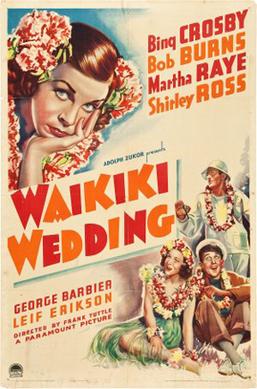
Waikiki Wedding is a 1937 American musical film directed by Frank Tuttle and starring Bing Crosby, Bob Burns, Martha Raye, and Shirley Ross. Crosby plays the part of Tony Marvin, a PR man charged with extolling the virtues of the Territory of Hawaii. The female lead, played by Shirley Ross is a local beauty queen who makes unhelpful comments about the islands. Bob Burns, along with Martha Raye, are the "comic relief". Amongst the supporting cast was a young Anthony Quinn. It was made by Paramount Pictures as a rival to the Fred Astaire and Ginger Rogers films then being made by RKO Pictures.

Mary Carlisle was an American actress, singer, and dancer, best known for her roles as a wholesome ingénue in numerous 1930s musical-comedy films.
Arthur James Johnston was an American composer, conductor, pianist and arranger.
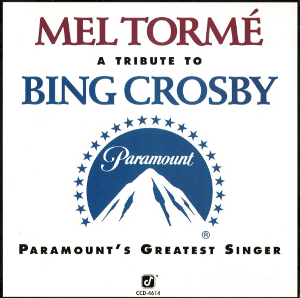
A Tribute to Bing Crosby is a 1994 studio album by Mel Tormé, recorded as a tribute to the singer Bing Crosby.

Bing: A Musical Autobiography was Bing Crosby's fourth Decca vinyl LP, recorded and released in 1954.

Sing You Sinners is a 1938 American musical comedy film directed by Wesley Ruggles and starring Bing Crosby, Fred MacMurray, Ellen Drew, and Donald O'Connor. Written by Claude Binyon, the film is about three singing brothers who go to California to find their fortune. Initially the film was to be titled "The Unholy Beebes" and then "Harmony for Three" before finishing with "Sing You Sinners". Filming took place in April/May 1938 in Hollywood. Race track scenes were filmed at the Pomona Fairgrounds and at Santa Anita using two dozen of Crosby's horses. Sing You Sinners was premiered on August 5, 1938 at the Del Mar racetrack with the New York premiere taking place on August 16.

College Humor is a 1933 American pre-Code musical comedy film, directed by Wesley Ruggles, and starring Bing Crosby, Jack Oakie, Richard Arlen, Mary Kornman and Mary Carlisle. Based on a story by Dean Fales, the film is about a college professor and the school's star football player who become rivals for the same beautiful student. Released by Paramount Pictures, the film co-stars George Burns and Gracie Allen.
Riding High is a 1950 black-and-white musical racetrack film featuring Bing Crosby and directed by Frank Capra. The songs were performed live during filming instead of the customary lip-synching to studio recordings. The film is a remake of an earlier Capra film with screenwriter Robert Riskin titled Broadway Bill (1934). While the film is generally a light musical comedy, its plot contains an unexpected tragic turn.
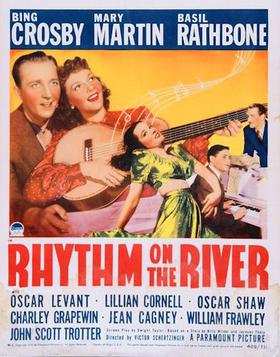
Rhythm on the River is a 1940 musical comedy film directed by Victor Schertzinger and starring Bing Crosby and Mary Martin as ghostwriters whose songs are credited to a composer played by Basil Rathbone. Crosby and Martin sang "Only Forever", for which James V. Monaco (music) and Johnny Burke (lyrics) were nominated for the Academy Award for Best Original Song.

Pennies From Heaven is a 1936 American musical comedy film directed by Norman Z. McLeod and starring Bing Crosby, Madge Evans, and Edith Fellows.

If I Had My Way is a 1940 musical comedy film directed by David Butler and starring Bing Crosby and Gloria Jean. Based on a story by David Butler, the film is about a construction worker who takes charge of the daughter of a friend killed in an accident.
Rhythm on the Range is a 1936 American Western musical film directed by Norman Taurog and starring Bing Crosby, Frances Farmer, and Bob Burns. Based on a story by Mervin J. Houser, the film is about a cowboy who meets a beautiful young woman while returning from a rodeo in the east, and invites her to stay at his California ranch to experience his simple, honest way of life. Rhythm on the Range was Crosby's only Western film and introduced two western songs, "Empty Saddles" by Billy Hill and "I'm an Old Cowhand " by Johnny Mercer, the latter becoming a national hit song for Crosby. The film played a role in familiarizing its audience with the singing cowboy and Western music on a national level.

Too Much Harmony is a 1933 American black-and-white pre-Code musical film directed by A. Edward Sutherland and starring Bing Crosby, Jack Oakie, Richard "Skeets" Gallagher, Harry Green, and Judith Allen. It was released by Paramount Pictures.

Top o' the Morning is a 1949 American romantic comedy film directed by David Miller and starring Bing Crosby, Ann Blyth, and Barry Fitzgerald. Written by Edmund Beloin and Richard L. Breen, the film is about a singing insurance investigator who comes to Ireland to recover the stolen Blarney Stone—and romance the local policeman's daughter.
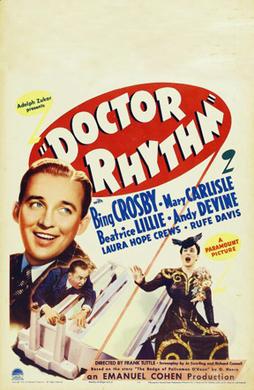
Doctor Rhythm is a 1938 American musical comedy film directed by Frank Tuttle and starring Bing Crosby, Mary Carlisle, Beatrice Lillie, and Andy Devine. Based on the 1907 short story The Badge of Policeman O'Roon by O. Henry, the film is about a doctor who pretends to be a policeman assigned as the bodyguard of a wealthy matron, whose beautiful niece becomes the object of his affections. The film features the songs "On the Sentimental Side" and "My Heart Is Taking Lessons".

Bing Crosby Sings with Al Jolson, Bob Hope, Dick Haymes and the Andrews Sisters is a Bing Crosby Decca Records studio 78rpm album of phonograph records featuring Crosby with several of Decca's top artists.
Elsie Ames was an American comic dancer and film actress. Between 1937 and 1974 she acted in 15 films. She is best known as the female film partner of Buster Keaton.
















